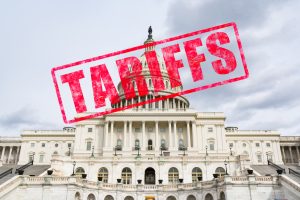Nervous Investors Exiting US Stocks at Near-Record Pace on Trade-War Fears
The comments below are an edited and abridged synopsis of an article by Patti Domm
Investors bailed out of US stocks at a near-record pace last week, as money flowing into Treasury bills surged to a 10-year high.
 Outflows from stock funds and ETFs totaled $24.2 billion, the third-highest ever. The $30 billion that came out of global stock funds was the second-highest ever and the largest since the financial crisis. Outflows from US stocks were the highest since the stock market correction in February. Bonds saw small inflows of $700 million.
Outflows from stock funds and ETFs totaled $24.2 billion, the third-highest ever. The $30 billion that came out of global stock funds was the second-highest ever and the largest since the financial crisis. Outflows from US stocks were the highest since the stock market correction in February. Bonds saw small inflows of $700 million.
Investors are adjusting positions, though T-bills, considered the safest of safe-haven bets, continue to pull in funds at a rapid pace.
July could be a month when investors sell volatility, but the market could get rockier in August and September, ahead of the US midterm elections.
The timing seems similar to 1998, when there was a late-cycle global credit event that started in emerging markets. There was forced deleveraging and a collapse in markets (the Asian currency crisis and Long Term Capital Management). Between July and October 1998, the S&P 500 fell 22% and Nasdaq fell 33%. Banks fell 43% in that period.
Emerging market debt fund in the last week saw its 10th outflow in a row as $3.2 billion exited. Emerging market equities lost $3.1 billion, the seventh week of outflows in eight.
Market events in 2018 include Federal Reserve tightening, the US decoupling from other economies, collapsing emerging markets and outperforming levered quant funds.
Strategists say to watch the summer pain trade in oil, banks and the yield curve.

Pingback: Wall Street and The New Cold War | BMG